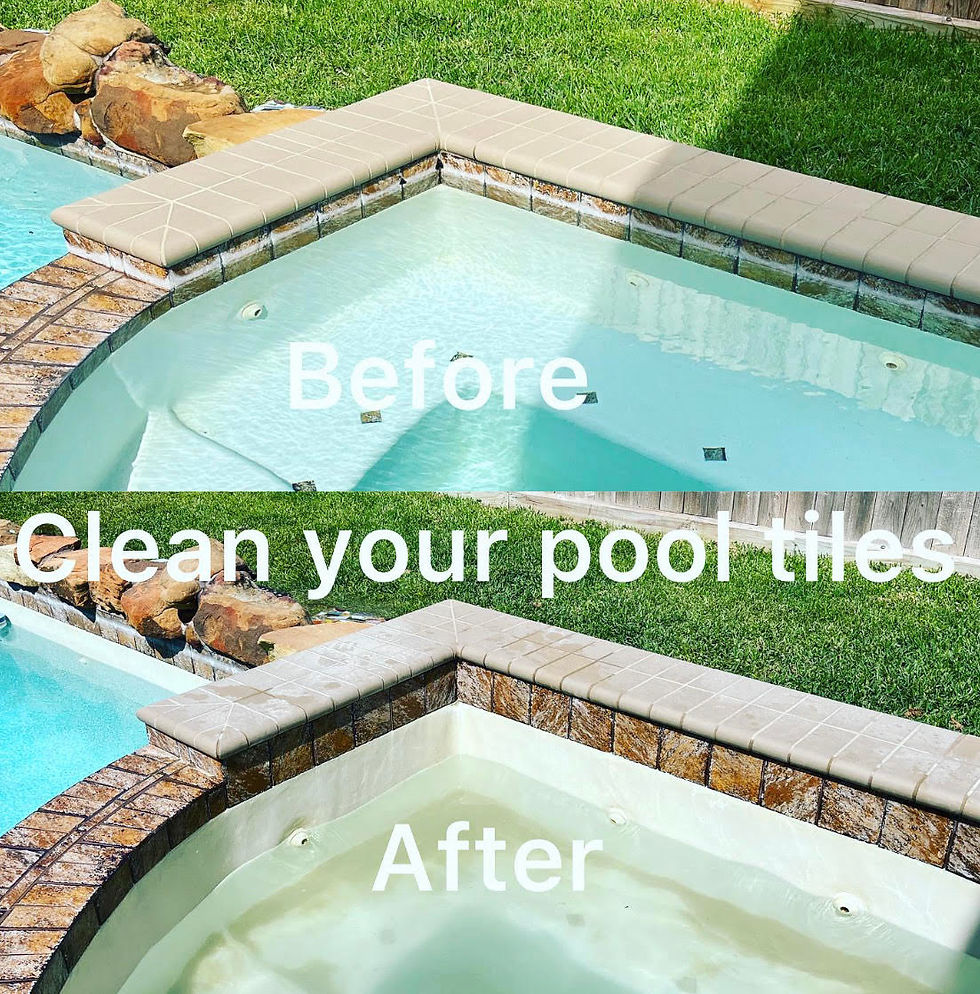Let Us Restore The Beauty To Your Pool Tiles and Stone Water Features.
- CHR

- May 10, 2023
- 3 min read
Sandblasting is a process commonly used for cleaning surfaces, including tiles and removing scale or old calcium deposits in pools. Sandblasting involves propelling fine particles of abrasive material, such as sand, at high speeds to clean or etch a surface.
To address the process of cleaning tiles or removing scale and calcium in a pool, abrasive blasting techniques are often used, but they may not necessarily involve sand. Here's an overview of the process typically used:
Surface preparation: Before beginning the blasting process, it is important to prepare the pool area. This includes draining the pool to the appropriate level, covering or protecting any delicate or sensitive areas, and ensuring proper ventilation.
Abrasive material selection: Depending on the specific requirements of the job, different abrasive materials may be used for blasting pool surfaces. Common options include crushed glass, baking soda, walnut shells, or specialized abrasive media designed for pool cleaning.
Equipment setup: A blasting system consists of a blasting machine or blaster that propels the abrasive material, an air compressor to provide compressed air, and a blasting nozzle or gun. The equipment is set up and adjusted according to the type of material being used and the desired blasting pressure.
Blasting process: The operator directs the blasting nozzle toward the target surface, such as the pool tiles or areas with scale and calcium deposits. When the compressed air is activated, it propels the chosen abrasive material at high speeds onto the surface, effectively removing the contaminants.
Adjustments and control: The operator adjusts the blasting pressure, distance from the surface, and angle of the nozzle to achieve the desired cleaning or removal effect without causing damage to the underlying material. This requires skill and experience to ensure an even and consistent result.
Cleanup and disposal: After the blasting process, the pool area needs thorough cleaning to remove the dislodged debris and abrasive material. The abrasive material and waste are carefully collected and disposed of in accordance with local regulations.

It's worth noting that sandblasting, which typically uses sand as the abrasive material, is less commonly used for pool cleaning nowadays due to environmental and health concerns associated with the release of silica dust into the air. Alternative abrasive materials are often preferred for their safety and effectiveness in pool maintenance.
If you are considering pool cleaning or scale and calcium removal, it is advisable to consult with a professional pool service or contractor experienced in pool maintenance to determine the most suitable and safe methods for your specific needs.
Stop wasting time and money with chemicals trying to remove that calcium build up!
Tile condition: Assess the overall condition of the tiles. If they are severely damaged, cracked, or chipped, it may be more practical and aesthetically pleasing to replace them entirely. However, if the tiles are structurally sound and the main issue is surface dirt, scale, or staining, cleaning and renewing them with a sandblaster can be a viable option.
Budget: Budget is a crucial consideration. Replacing tiles can be a significant expense, as it involves not only purchasing new tiles but also the cost of labor for installation. On the other hand, cleaning and renewing the existing tiles with a sandblaster is generally a more cost-effective option, as it requires less material and labor.
Aesthetic preference: Consider your desired outcome in terms of appearance. If you want a completely different look or feel for your pool, changing the tiles might be the better choice. On the other hand, if you are satisfied with the existing tile design and want to restore their original look, cleaning and renewing them with a sandblaster can achieve that goal.
Time and effort: Replacing tiles can be a time-consuming process, especially if it involves removing old tiles and preparing the surface for new ones. Sandblasting, while still requiring some time and effort, may be a quicker option, especially for smaller areas or localized cleaning.
Professional assessment: It is advisable to consult with a professional pool service or contractor who can evaluate the condition of the tiles and provide expert advice on the most suitable course of action. They can assess the extent of damage, provide cost estimates for both options, and help you make an informed decision based on their expertise.



Comments